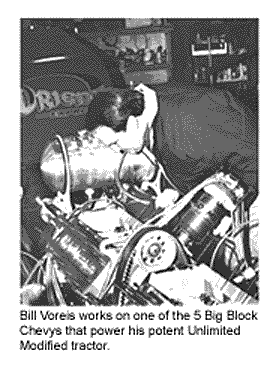
Tractor pulling has been with us for as long as there have been tractors. Farmers used to pull their horses, mules or oxen and, just as today, each bragged that he had the biggest and strongest. Today, at the top echelons of pulling, the technology is equal to anything else in motorsports.
Although you won’t see teams developing their own engines like in NASCAR, there are shops that specialize in designing and building winning truck and tractor pull engines. For many shops, tractor pulling is about all they do; they have developed a following
Like the top racers in the country, many competitors will pay whatever it takes, as long as they are winning, and believe me, pulling at the top levels is anything but cheap. A competitive 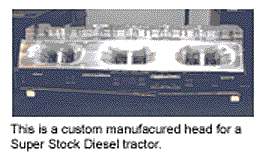
Super Stock Diesel engine can set a racer back $100,000; the big block, blown alcohol motors will run as high as $50,000 each and some tractors have up to six engines powering them. Heck, even the antique tractor pullers are spending upwards of $25,000 on their motors, and all they win is a trophy and a handshake!
The National Tractor Pullers Association (NTPA) is the premier sanctioning body for tractor pulling in the U.S. and its competition rules are the basis for those used worldwide. Tractor pulling has found its way to Europe and Australia, and many of the manufacturers and shops in the U.S. regularly ship to those countries. It is common for a group to come over from Europe, visit many of the shops here, then fill a container or two with pieces and parts and ship it back to Europe.
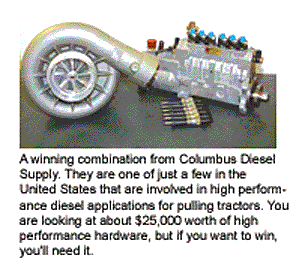
The NTPA Grand National Championship circuit is the top of the pulling world. This is the NASCAR or NHRA of truck and tractor pulling. The NTPA currently recognizes 11 divisions of pulling at the Grand National level: Super Farm Stock, Pro Stock, Super Stock Diesel, Super Stock Open, Unlimited Modified, Limited Modified, Two Wheel Drive, Modified Four Wheel Drive, Super Modified Four Wheel Drive, Mini Modified and Super Semi.
This variety increases when you drop down into NTPA sanctioned regional and state level pulling where there are additional classes and divisions. Drop further down to UN-sanctioned “brush pulling” and the variety increases again. There is a lot of pulling going on around the country, from 8-year old kids on a stock garden tractors to motorcycle engine powered minis. When you get to the tractors and other full size vehicles, you can go from antique tractors all the way up to the NTPA Unlimited Modifieds.
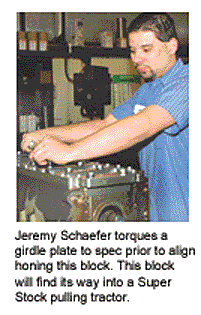
This variety can mean a lot of work for those shops willing to tackle some of it, or for those looking to find a new niche, a niche Mike Schaefer of Southern Illinois Crankshaft has cultivated. Schaefer, 2003 AERA chairman, says that nearly 45 percent of the work he does today is pulling-related.
Because there is such variety, this article will concentrate on the NTPA’s National divisions For the most part, however, nearly all other classes or divisions you’ll find throughout the country will be similar to these that we discuss. We’ll talk about each class or division to give you an idea what your capabilities might be as to building engines for some of these trucks and tractors.
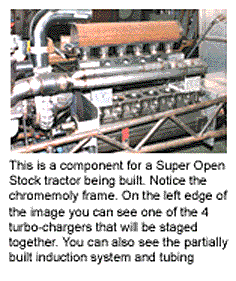
We’ll start with the “Tractor” classes, as they are the most specialized. When we get to the modified and truck classes, they’re much more familiar to you as they use big block V8s for the most part. We will discuss the differences of each in generalities: for specifics you will need to refer to an official NTPA (or other sanctioning body’s) rule book.
The Super Farm Stock and Pro Stock tractors are the closest you’ll get to an “off the farm” tractor, at least at the national level. Nearly identical, they compete under basically the same rules – with a few exceptions.
Super Farm is a diesel-powered class utilizing the stock block that came with that model tractor. Tractors are limited to a single turbocharger. The turbo in this class is limited to a 3-in. inlet and outlet, while the Pro Stock class can have any size turbo. The Super Farm is limited to 640 cid, but Pro Stock can be as large as 680 cid.
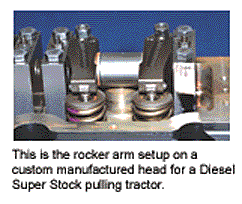
The Super Stock diesel tractors also closely match their cousins out in the field, but would be considered the most powerful diesel-powered “Tractor” pulling vehicle. They are allowed up to 4 turbochargers and can be up to 650 cid. Again, they must utilize a stock OEM block.
For a shop looking to get into the pulling market, Super Farm and Pro Stock would be a good starting point if you have experience building/rebuilding diesel-powered engines. However, keep in mind these are not just any old diesel engines.
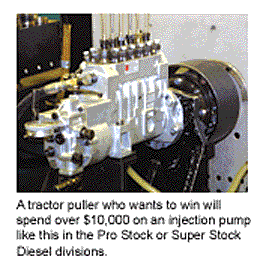
For the most part, these tractors originally came from the factory with under 150 hp – they produce many times that as competition vehicles. For instance, a Super Farm tractor will put out in the neighborhood of 1,000-1,100 hp at a boost pressure of 55 psi with a single 3-in. turbo. A Pro Stock will produce 1,800 hp-plus with a boost pressure in the 110-120 psi range. A Super Stock with 4 turbochargers and 200 psi-plus boost pressure will top out at around 2,500-2,800 hp.
In stock form, these tractors would probably never see more than 3,000 rpm. In pulling competition, they will regularly run at 6,000-8,000 rpm depending on the class. The blocks may be stock, but that’s about where it ends. Although parts such as valves, rods and pistons are available from several manufacturers, parts such as cylinder heads, camshafts, turbochargers, and intake and fuel systems are all custom-made components. A top-of-the-line injection pump for one of these tractors will run in excess of $10,000. A turbocharger is in about the same range.
To keep these engines from melting down during competition when they’re pushed to such limits, engine builders all use water injection to help keep internal combustion temperatures at a manageable level. While they’ll burn 3-5 gallons of diesel fuel during a typical 8-10 second run, they’ll also inject about that same amount of water. The main reason for the water injection is to keep the combustion temperatures down, by injecting the water into the air charge, it also helps increase power by increasing the density of the aircharge.
There are several manufacturers that specialize in designing and building these parts. The biggest horsepower gains in the past few years have been found in the heads and turbochargers. A lot of time and money has gone into head design and flow testing, as well as turbo design. The shops that design and manufacture these parts are every bit as technologically advanced as a NASCAR shop. Does your shop have expertise in design and manufacture? If so, this could be a new market for your services.
The movement of late is towards “component chassis” designs, where the tractors are built out of component parts, just like the modern NASCAR NEXTEL Cup cars, or NHRA dragsters. In the past, you would just go buy an old farm tractor and modify it for pulling, but safety and performance is dictating the move in this direction. This move toward component tractors could open the door for those with the expertise in design and manufacture of parts for these component tractors.
Which brings us to the “Open Super Stock” tractors. The Open Super Stocks are hybrids of the tractor-pulling world. They are the most powerful, single engine pulling vehicles in the world. They will put out 4,000-4,500 hp at a boost pressure of around 80-110 psi from up to 4 turbos. They’ll develop a tire speed of 120-140 mph and pull a 65,000-lb. sled 300 feet in eight seconds.
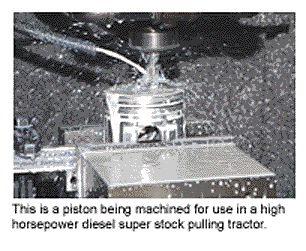
These Open Super Stocks, like the diesel tractors must use a stock OEM block that was available for the make and model of the tractor. In most cases this would be a straight six, but in some cases, such as Massey-Ferguson and White, Perkins or Caterpillar, V8s were available for some models. But the sheetmetal is where any similarities to a stock tractor end.
For the most part, they have been converted from diesel to alcohol fuel and they utilize a custom manufactured overhead cam head or heads. You will also find that nearly all are of component construction. They are the most technologically advanced tractor-pulling vehicles out there and quite possibly the most technologically advanced motorsport vehicle there is.
There you have the “tractor” classes. They are the most specialized pulling vehicles, but because of that, they also offer the most opportunity for shops to move into the pulling market, simply because nearly every part and piece is custom designed and manufactured.
The modified class is broken down into two divisions, the Unlimited Modified, and the Limited Modified. They are each a multi-engine class. The Unlimited Modified is just that, pretty much anything goes. It’s the proverbial “Run what ya brung, and hope ya brung enough” division. If you can get it on the chassis, stay within the safety rules and make the weight, virtually any powerplant goes.
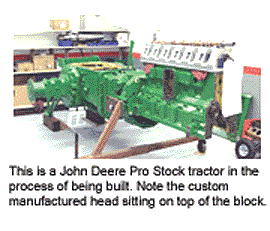
In the Unlimited division you’ll see 3, 4 and 5 jet turbine engines on one tractor. You might see two or three V12 Allison aircraft engines, or you might see 4, 5 or 6 blown big blocks powering a tractor. In the Limited Modified division, you’ll see the same mixture of powerplants, but they will be limited in number and type depending on the configuration. Turbine engines will run anywhere from about 1,000 hp each to over 4,000 hp, depending on the brand and model.
The Allison V12 piston engine is a World War II vintage design. It was used in the P-40, P-51, P-38 and the A-36. When originally contracted by the government, it was supposed to be a 650 hp engine. When the Army finally qualified it, after a very stringent 150-hour test, it was developing 1,000 hp. The final model used in World War II developed 1,475 hp and the stock engine featured a 5.50? bore with a 6.00? stroke.
The 1,710 cid engine found its way into Unlimited Hydroplane racing boats around 1946, and the first pulling tractor to use one was in 1966. Besides being extremely light, what really made them popular with pullers was that you could get them in right and lefthand configurations. When running two of them on a tractor, you can offset the torque of the engines by using one of each. These days, the top running Allisons are producing somewhere around 2,500 hp.
One thing that would be of interest to shops, is that parts for these engines are becoming very hard to find and most are custom made. Anyone that would be interested in doing some R&D, maybe working with a puller along the way, may find a nice little niche with these engines.
The blown big block engines used in the multi-engine Modifieds, Mini Modifieds, Two Wheel Drive trucks and Super Modified Four Wheel Drive divisions, are all very similar to those that you might find at the drag strip. They are all alcohol fueled and most are supercharged, although a few have turbochargers. You’ll find Hemis and Wedge Heads, Chevrolets, Mopars, and Fords.
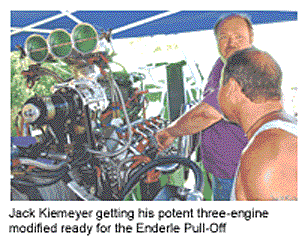
If you are already building big block race motors, then you can easily build pulling motors, but you must be aware of some of the differences. The biggest difference would be in the fuel system. Drag motors need a lot of fuel at the start, out to about the first third of the run, then they lean out. Pulling motors are pretty much the opposite, they need less fuel at the start but by mid-track when the load begins to increase, the need for fuel increases to the end of the run, with the most fuel needed at the finish.
There are other differences, too, such as a certain camshaft design that a builder might find after some R&D, which would work better for pulling. Each class or division may be slightly different also, either because of rules or because of preference. Blower size, valve size, or blower overdrives are all factors that will be different depending on the class or division. The modifieds might put out about 2,000 horsepower, while the Two Wheel Drive class might push 2,500 hp with a bigger supercharger and “big valve” heads.
Another NTPA class that we’ll talk about is the Modified Four Wheel Drive Trucks. These pulling trucks are the only class/division that must use a naturally aspirated engine, that is, either carbureted or injected, but no supercharger or turbocharger. They are limited to 650 cid and fueled by alcohol or gasoline.
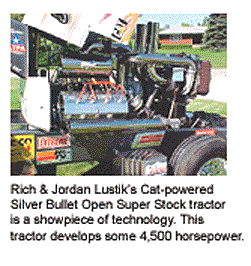
These are probably the most expensive automotive engines used in pulling with a 650 cid engine with the best of everything reaching the $55,000-$60,000 range. Competitors in this division don’t have a big supercharger to make power, so they must rely on getting the best air flow they can, something that costs a lot of money. A shop can spend literally hundreds, if not thousands of hours in R&D searching for a few more horsepower.
The final NTPA class we’ll talk about is also the biggest. Tractor pulling is known as “the heaviest motorsport on wheels” and the Super Semis are the behemoths of pulling. These former road tractors weigh in at a maximum of 20,000 lbs. and will develop 3,000-plus hp. They are allowed up to a 250? wheelbase and a width up to 102?.
These trucks must use a “production-available” commercial truck engine that was available in road use trucks. However, internal modifications are basically unlimited, and they are allowed an unlimited number of turbochargers or superchargers, although, the turbos or superchargers are allowed only two air stages.
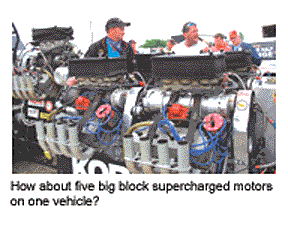
You’ll find virtually all brands represented in this class, Mack, Freightliner, Kenworth, etc. There is also a “Pro Stock” division of this class that is fairly new. They follow the same rules, but are only allowed one turbocharger.
As you can see after this overview, for sheer variety, no other motorsport comes close to truck and tractor pulling. Any shop out there should be able to find a niche in this sport. Look for future articles as we get more specific on the engine requirements in each particular class. For more information on tractor pulling you can go to www.NTPAPull.com.













